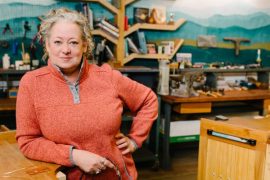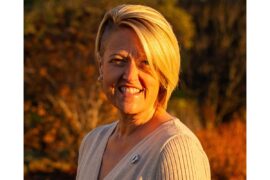What We Make and What Makes Us
A budding maker movement is sweeping across the country, with roots in local communities like ours. What does that mean exactly? What defines a maker? Why should we care? Put simply, makers play a direct role in creating a product. They could be engineers, welders, calligraphers, or weavers; the thing all makers share is an intimate understanding of their craft. It’s no secret that many people feel too busy and overwhelmed. In the age of speed and convenience, it’s almost ironic that a DIY spirit can gain any momentum at all. Advances in technology continually push to get our hands out of busy, repetitive work. Yet in spite of this, at our cores, we are creative beings who crave connection. Creativity drives connection, and to know how things are made is to know their makers, our colleagues and neighbors. It comes as no surprise, then, that Madison is bustling with makers who embody the grassroots, collectivist spirit. The maker movement is all about understanding how things are made and appreciating those who made them. Here are just a few of our neighbors dedicated to the craft of helping us feel at home.
INSPIRED EVERY DAY | MAREN MISNER, THE TIN OWL
Maren Misner has an eclectic background. She has been a teacher, a dog walker, a community developer and, through everything, a photographer. She got her first camera from her mom at age 7 and became obsessed with it. After college, she sold her fine art photography at fairs, but like many creatives, became exhausted balancing her day job with making art. In 2013, Misner took the leap to pursue photography full time. She transitioned from fine art to designing everyday items, creating pieces that are both full of wanderlust and a love for home. She takes photos of nature and from travels and is known for her collages of license plates in the shapes of states they represent. In her own décor, Misner surrounds herself with other artists’ work that sets the tone for her day. “I hope that if someone’s wearing a locket I made, they get the inspiration they need in that moment,” she says. In the spirit of the maker movement, Misner embraces collaboration and takes great care in finding companies that match her ethical beliefs. “Two small family businesses print my tea towels and onesies. When people support my business, they’re supporting two businesses,” she says. “I’ve been incredibly impressed by the arts community here. There’s competition, but not elitism. People are willing to help get you where you need to be.” thetinowl.com.
BEAUTIFUL UTILITY | KYLE STOLLDORF, PIECES UNIMAGINED
Kyle Stolldorf has an eye for beautiful work with a history. He got his start running an antique mall in Chicago, expanding to five stores and consulting in antiques advertising. He left antiques to open a church in Delavan, Wisconsin, as a way to give back. After 10 years as a pastor, Stolldorf decided to open a store that brought together the work and community he’s passionate about. He opened Pieces Unimagined in 2015. The aesthetic is steampunk and industrial modern, simultaneously overdone and utilitarian—ornate tables with cast iron legs, clocks with too many gears, the rawness of objects reclaimed from industrial life. Wisconsin artisans make 70 percent of the goods Stolldorf buys. His goal is to get to 90 percent. “If there’s anything I’m trying to do, it’s connect the maker movement with the retail side, to get work in customers’ hands.” A quote by William Morris presides over Stolldorf’s Willy Street store and vision: “Have nothing in your houses that you do not know to be useful or believe to be beautiful.” In its first year, Pieces Unimagined has expanded into a second space to meet demand for its offerings in the spirit of utilitarian beauty, which includes custom orders. “People tell me all the time, ‘We’ve been waiting for a store like this.’” piecesunimagined.com.
DESIGNING A MORE MEANINGFUL LIFE | ASHLEY GRIES, CASA & CO.
Ashley Gries got her start studying interior design in Iowa. After graduating, she and her husband joined the Peace Corps. “When we returned in 2008 after the economic crash, the market for design work was bad,” she says. “I opened a weekend market, selling handmade and antique items. I started selling pillows on a whim, made from fabric scraps I had. Those sold really well. I had to find a regular source for materials. I never intended to get to this point, but it’s been great merging different things I enjoy doing.” Gries now runs Casa & Co., providing design services for trade show booths, styling for photography shoots, and, of course, handmade pillows. Her aesthetic is wabi-sabi—perfect imperfection—well worn and textured. She prints inspirational quotes on the linen. “I pledge to lead by example, to be true and brave,” is one example. “I’ll get custom orders of a favorite family quote or inside joke. People have proposed with my pillows. Others have cried in my booth at a show, when they read a quote that resonates with them.” Beyond the products, Gries hopes that her work inspires others to take up a craft and join the maker movement themselves. “It’s important to know where the things we purchase and use come from and who made them. It makes for a more meaningful life.” casaandcodesign.com.




